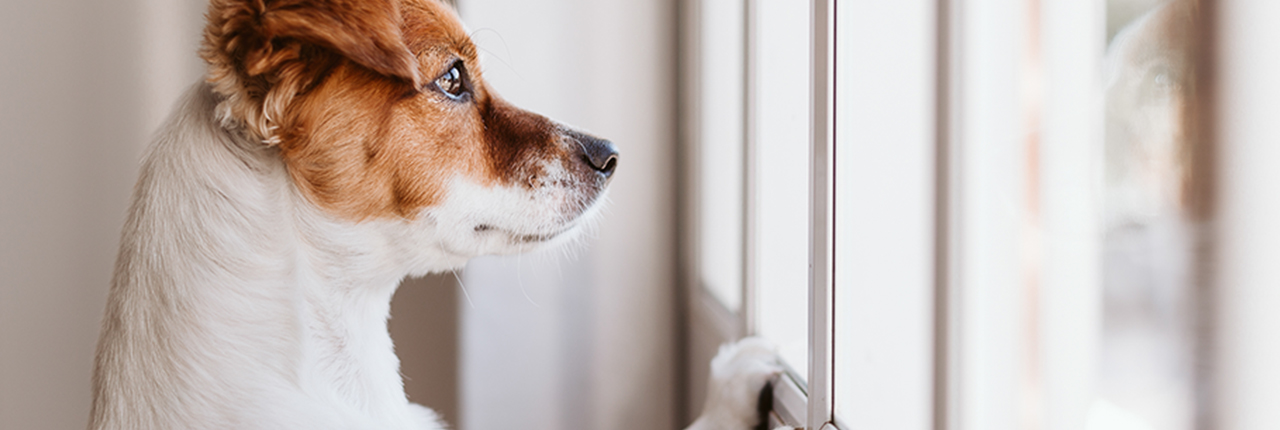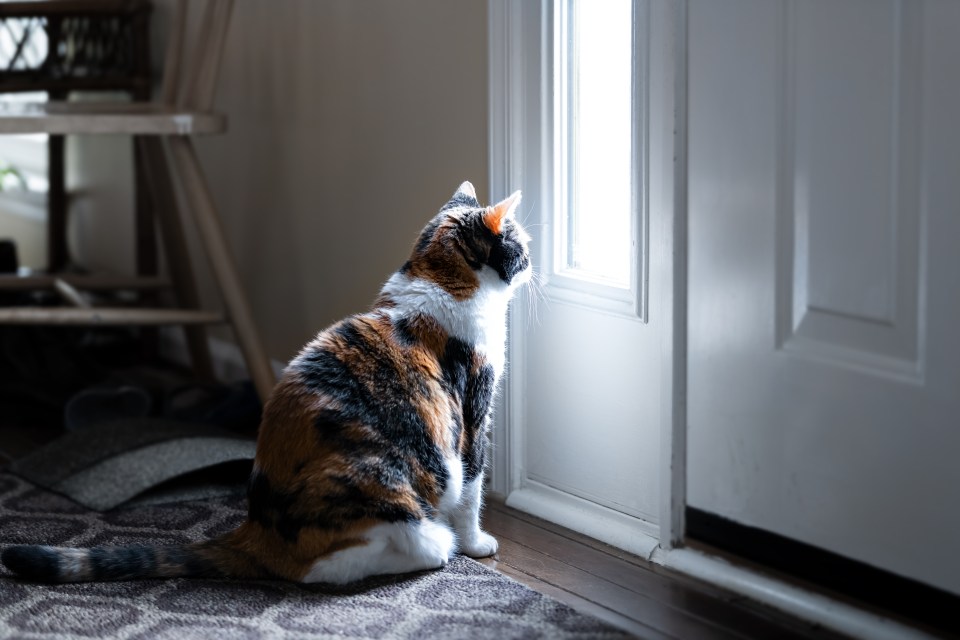
Helping pets overcome stress when you return to work, school
While people talk about the safest ways to return to the workplace and school, protecting the well-being of pets should be part of the conversation too.
“Many of us have been with our pets nearly all day, every day during the pandemic,” says Linda Horspool, BVMS, PhD, DipECVPT, MRCVS, director, companion animal health, MSD Animal Health. “But when we go back to the workplace or go to school and disappear for the day, the pets left behind can experience anxiety, fear, frustration and boredom.”
With a little training and patience, you can help your furry family members ease into the new routine. When you return home at the end of the day, you’ll find a calm pet rather than a house full of couch stuffing, urine in your favorite shoes and a note from the neighbor complaining about the annoying noises coming from your house all day.
Signs of anxiety
For dogs, signs of anxiety include constant panting, irritability, increased barking, changes in eating or sleeping patterns, destruction of objects in the home, and urinating or defecating in the house.
“Cats can show some of the same signs, in addition to increased hunting behavior, isolation, excessive vocalization (crying, moaning, meowing) and excessive self-grooming,” says Dr. Horspool.
To support pet owners and pet health, our companion animal health experts and staff veterinarians have created a list of things you can do to smooth the transition back to the office or to school.
#1: Practice leaving

Walk through everything you would normally do before leaving the house. Put on your shoes, have coffee, grab your keys, and head for the door. Go out but only for a few minutes. Come back in and resume your day in the house.
Repeat this process for a few days in a row but leave the house a little longer each time, building up to an hour, then two, then four.
“It’s important to repeat the routine for a few consecutive days and to be consistent,” says Dr. Horspool. “With patience, you’ll see good results.”
#2: Give your pets something to see (and hear)
Make sure your pets have access to spaces where they can see the street, people or other animals. Bird watching, for example, is fascinating for people and animals too. Or, if you typically leave the TV or music playing, keep them on while you’re away.
#3: Stimulate your pet’s brain
When you leave the house, make sure to place toys around the house that stimulate your pet’s brain. Puzzle toys filled with food are great options for dogs, along with toys that dispense treats when your dog rolls and scoots them a certain way.
For cats, add a few scratching posts and comfy window perches. Place a bird feeder in clear view of your cat’s post. You can also place cardboard boxes in different rooms to allow your kitty to explore the space.
#4: Avoid scolding
“Avoid scolding or punishing your pet if you come home and find an unwanted surprise,” says Dr. Horspool. “Your pet doesn’t destroy things because he or she is bad. They’re probably scared or bored and may be anxious because their owner is away.”
Instead of disciplining your pet for bad behavior, take note of when your pet is well-behaved and calm, and reward that behavior with a treat, a cuddle or verbal praise.
#5: Respect your pet’s routine
Think about your pet’s eating and playing routine when you are at home. Try to keep that routine as much as possible when you are away. This may require you to recruit a neighbor, a pet sitter or pet daycare to help.
#6: Use tech to connect
While you are away from home, the right technology can help you feel more connected to your dog or cat and make it easier to spot and respond to changes in their behavior.
Our Sure Petcare products allow you to monitor your pet’s behavior throughout the day, including eating, drinking, sleeping and exercise patterns. Easy-to-use apps interpret and report the data on your mobile device, empowering you to care for your pet in new ways.
#7: Keep your pet healthy
To help your pet live a great life, don’t forget your pet’s annual health visit. Your veterinarian can check for signs of pain or illness that your pet may be experiencing and keep your pet up to date on vaccinations and other preventive medications.
“Our pets bring so much to our lives – comfort, companionship, joy and even better health for their human companions,” says Dr. Horspool. “We’ll miss them when we return to work and school, but by following the steps above, we may be able to ease them into this new routine without anxiety or fear.”
